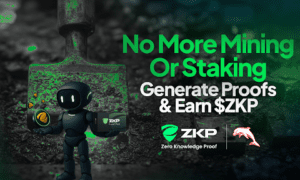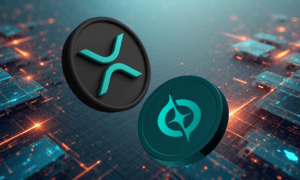The Senior Staff DevOps Engineer shares how automation, resilience, and platform efficiency support faster releases and secure digital services for some of the world’s most demanding clients.
As enterprises accelerate their digital transformation, cloud‑native platforms have become the backbone of modern business. This shift has elevated infrastructure engineering from a quiet back‑office function to a strategic driver of business continuity and revenue protection. Today, every smooth release and secure deployment depends on an ecosystem of automation, observability, and resilient cloud architecture that allows developers to innovate without being pulled into emergency fixes. In high‑stakes industries like finance and critical services, this reliability is more than technical — it underpins customer trust, regulatory compliance, and financial stability.
One of the engineers ensuring that stability is Nikita Romm, a Senior Staff DevOps Engineer at Palo Alto Networks, a global leader in cybersecurity that provides cloud and network protection solutions for enterprises, including many in the financial and regulated sectors. While his team collaborates closely with DevSecOps specialists, Nikita’s focus is infrastructure resilience, process automation, and enabling rapid release cycles — especially for products serving clients in highly regulated sectors such as banking and critical infrastructure. He has also formalized his practices in a published monograph, “Methodology for Automating and Securing DevOps Processes,” and contributed peer-reviewed research in journals such as UL Open Access and The American Journal of Engineering and Technology.
In this conversation, he explains how thoughtful platform design reduces friction for development teams, the practical role of automation in incident response, and how working behind the scenes helps protect what matters most: customer trust.
Nikita, thank you for joining us. Modern enterprises push for rapid software delivery, but reliability remains non‑negotiable. From your experience, what makes finding this balance so difficult?
One of the biggest challenges is complexity. The more distributed and cloud‑native your system becomes, the more moving parts you need to monitor and automate. It’s easy to move fast early on, but without proper infrastructure, that speed often leads to instability.
The key is designing platforms that are observable, consistent, and easy to recover when something goes wrong. Otherwise, the pressure to ship fast turns into technical debt and outages that can affect both users and business outcomes.
At Palo Alto Networks, you’ve helped design and maintain infrastructure for enterprise clients, including banks and other regulated organizations, where downtime can have direct financial consequences. How does your team ensure that such critical systems remain reliable?
Reliability starts with predictable, observable systems. We treat every part of the infrastructure as code and every deployment as repeatable. Tools like Terraform help us manage resources across AWS and GCP consistently, which reduces the risk of human error.
Real‑time observability is another cornerstone. We rely on Prometheus and Grafana dashboards, along with centralized logging and alerting, to spot anomalies early. We also conduct post‑incident reviews to continuously improve.
For clients in finance, even a brief outage can affect both trust and revenue. Our philosophy is to anticipate failure instead of only reacting to it, which minimizes business risk.
Under your leadership, your team also automated deployments, implemented robust CI/CD pipelines, and built real‑time monitoring into the process, all of which are vital for Palo Alto Networks to ensure secure, uninterrupted service for regulated sectors where downtime can harm trust and compliance. How does this automation help you release new features quickly while keeping the platform stable?
Automation is what allows speed without sacrificing safety. We use GitLab and Jenkins CI/CD pipelines to remove manual steps and enforce quality gates. Every change goes through automated builds, tests, and checks before reaching production.
We also integrate secrets management, policy enforcement, and container scanning into the pipelines, so compliance and security checks happen automatically. If a dependency is vulnerable or a configuration violates our standards, the pipeline blocks the release.
This approach improves mean time to recovery (MTTR) because our infrastructure is fully scripted and consistent. If something slips through, we can roll back or fix quickly. For enterprise and banking clients, this means faster delivery of new features with confidence in stability and security.
Your monograph, “Methodology for Automating and Securing DevOps Processes,” lays out a complete framework for building reliable and scalable infrastructure — an approach that offers valuable guidance for an industry facing growing complexity and high reliability demands. Looking back, which of its principles have become the most practical in supporting fast and stable releases for enterprise clients?
When I was writing the monograph, I wanted to capture the lessons that make infrastructure both reliable and efficient. The principle I use every day is to design for repeatability and observability.
In practice, that means defining infrastructure as code, having CI/CD pipelines with built‑in checks, and making sure monitoring is never an afterthought. If the system is consistent and transparent, you can release new features faster without constantly firefighting. That’s exactly what matters for enterprise clients — they need speed, but they also need confidence that every release is safe.
By publishing peer‑reviewed research on DevOps and infrastructure security, you’ve contributed to the professional knowledge base in this field. How does that research experience guide you when implementing solutions for complex, high‑reliability environments like banking or critical cloud services?
Publishing research taught me to think with structure and discipline. In peer‑reviewed work, every claim must be backed by data, and every process must be clear and reproducible.
I carry that mindset into infrastructure design. For high‑stakes environments, it’s not enough for a system to just work — it must be defensible, auditable, and repeatable. This approach makes solutions easier to scale, maintain, and explain to both internal teams and external auditors, which is essential in regulated industries.
Alongside contributing to research, you’ve also invested heavily in professional certifications, having earned five Kubernetes certifications and the rare Kubestronaut title, along with AWS and Terraform credentials. How have these certifications shaped your approach to infrastructure design and team collaboration?
Certifications give a structured understanding of complex systems. They don’t replace hands‑on work, but they ensure I’ve covered the critical areas and can speak a common language with engineers, SREs, and auditors.
In a large organization serving regulated clients, that consistency builds trust in architectural decisions. It also makes collaboration smoother because everyone aligns on the same standards and best practices.
After years of building infrastructure for enterprise clients and contributing to the professional community through research and publications, you’ve seen the field evolve rapidly. In your view, what changes will shape the future of DevOps and cloud infrastructure in the next few years?
I think the biggest shift will be in complexity management. Systems keep getting more distributed — multi‑cloud, hybrid setups, and microservices everywhere. Teams will need better tools to make sense of it all and keep it reliable.
AI will also play a larger role, from predicting failures to optimizing pipelines and even suggesting fixes. But human judgment will remain crucial, especially in high‑stakes environments like finance or healthcare.
Finally, I see a cultural change continuing. DevOps is no longer just about tools — it’s about collaboration across development, operations, and security. Teams that break down silos and focus on shared outcomes will be the ones moving fastest without compromising stability.





























